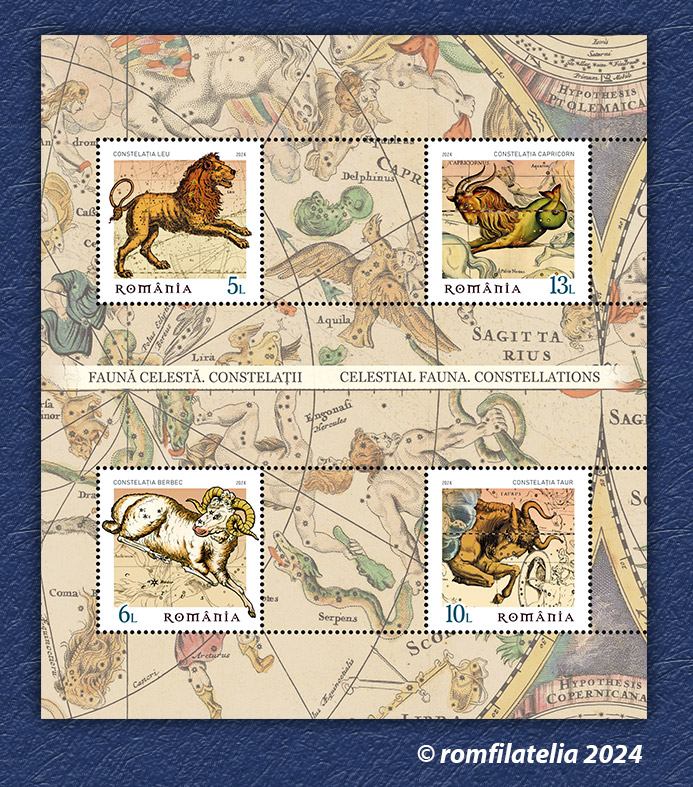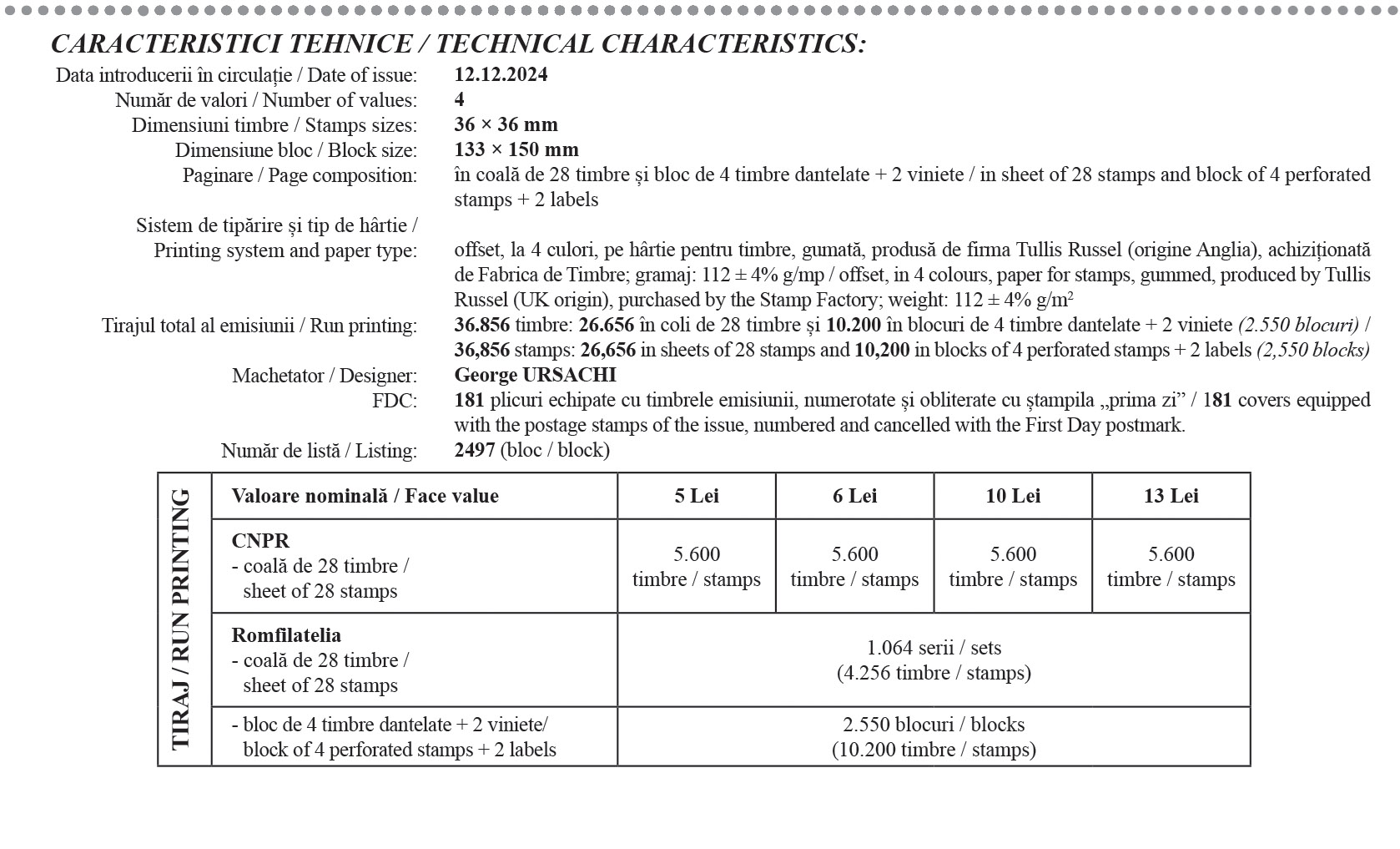 ‘A stamp and a patch of sky above you’
‘A stamp and a patch of sky above you’
Romfilatelia adds to its philatelic collectible themes a new issue entitled CELESTIAL FAUNA. CONSTELLATIONS – in which astronomy and postage stamps images come together to illustrate the deep connection between heaven and earth. The project explores the intersection between astronomy, mythology and natural cycles through four postage stamps, a philatelic block of four perforated stamps and a First Day Cover, featuring some of the constellations with the names of iconic animals. The issue will be introduced into circulation on Thursday, December 12, 2024.
A constellation is one of the 88 areas into which the celestial vault is divided, an apparent grouping of stars that, joined by an imaginary line, resemble a particular object, animal or mythological character. For most of the constellations visible in the northern hemisphere of the Earth, the names have existed since Antiquity. For those in the southern hemisphere, the names come from navigators and astronomers at the time of the great geographical discoveries, and so these constellations have technical names. In modern astronomy, a constellation is a certain portion of the celestial sphere precisely delimited around the original imaginary figure, so that every fixed celestial object (even invisible to the human eye) can be assigned to a constellation.
The LION CONSTELLATION (Leo), illustrated on the stamp with the face value of Lei 5, is one of the outstanding constellations of the northern hemisphere, visible in the winter and spring night sky. In Greek mythology, it represents the Nemean lion, slain by Hercules in his first heroic labour. His main star, Regulus, marks the heart of the Lion and is an important part of this brilliant constellation. The sign’s natives are creative and have a strong sense of personal pride and infatuation.
The RAM CONSTELLATION (Aries) is depicted on the stamp with the face value of Lei 6. In ancient times, the vernal equinox was in Ram, which is why this constellation signifies the rebirth of nature and balance. In Greek mythology, this constellation represented the ram whose Golden Fleece inspired the story of the famous expedition of the Argonauts led by Jason to Colchis. The star Hamal, 66 light years away, is the brightest star in the constellation. Ram is associated with energy, confidence and independence, sometimes combined with expressions of dominance.
The BULL CONSTELLATION (Taurus), represented on the stamp with the face value of Lei 10, visible on fall and winter nights, is highlighted by the Hyades, a V-shaped cluster of stars, and the star Aldebaran, an orange giant 65 light-years away. Above the Hyades is the Pleiades, a young star cluster whose blue stars shine brightly. In mythology, the Bull is associated with the transformation of Zeus and symbols of fertility and abundance. Natives of the zodiac sometimes exhibit, along with normal social behaviour, a preoccupation with luxury and possessiveness.
The CAPRICORN CONSTELLATION (Capricornus) is depicted on the stamp with the face value of Lei 13. The Capricorn constellation, also called the Water Goat, is shaped like an old-fashioned upside-down hat and is visible in the southern sky. In the Bronze Age, the winter solstice took place in this constellation, but due to the precession of the equinoxes, the winter solstice now occurs in the Archer constellation. The constellation includes many less bright stars and a double star. In Romania the constellation is visible and is popularly known as the Horn of the Goat. Natives are known for their devotion and loyalty.
The SWAN CONSTELLATION (Cygnus) is illustrated on the First Day Cover. The swan shines in the plane of the Milky Way, dominating the summer and fall sky with its distinctive asterism, the Northern Cross. Associated with mythological stories of Zeus and Orpheus, the constellation symbolizes the elegance and mystery of the night sky. Crossed by the Milky Way, the Swan includes remarkable stars and other fascinating celestial bodies.
The constellations have a relevance, an astronomical one, providing a frame of reference for monitoring the movements of the stars, the Moon and the planets, being necessary for the identification of stars used in navigation and orientation, to which is added the cultural one, representing a symbol of the connection between the cosmos and human existence, marking natural cycles and the passing of time.
Romfilatelia thanks the representatives of ‘Grigore Antipa’ National Museum of Natural History for the documentary support granted to the development of this issue of postage stamps.



